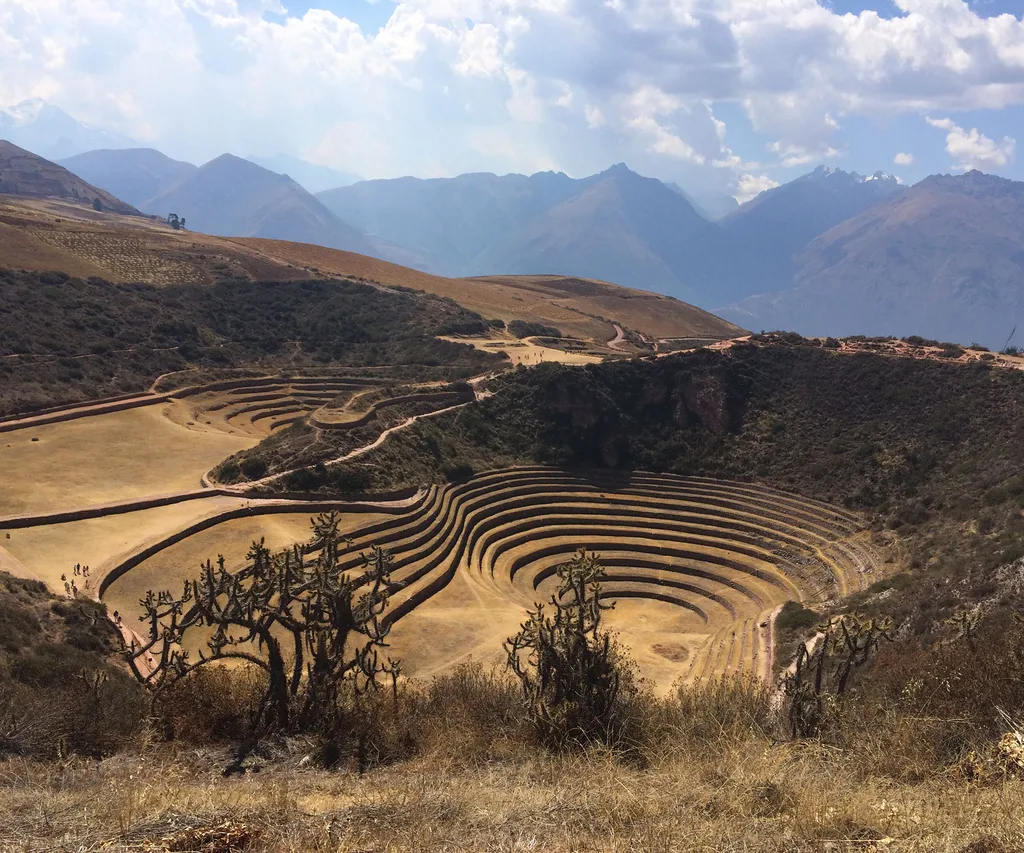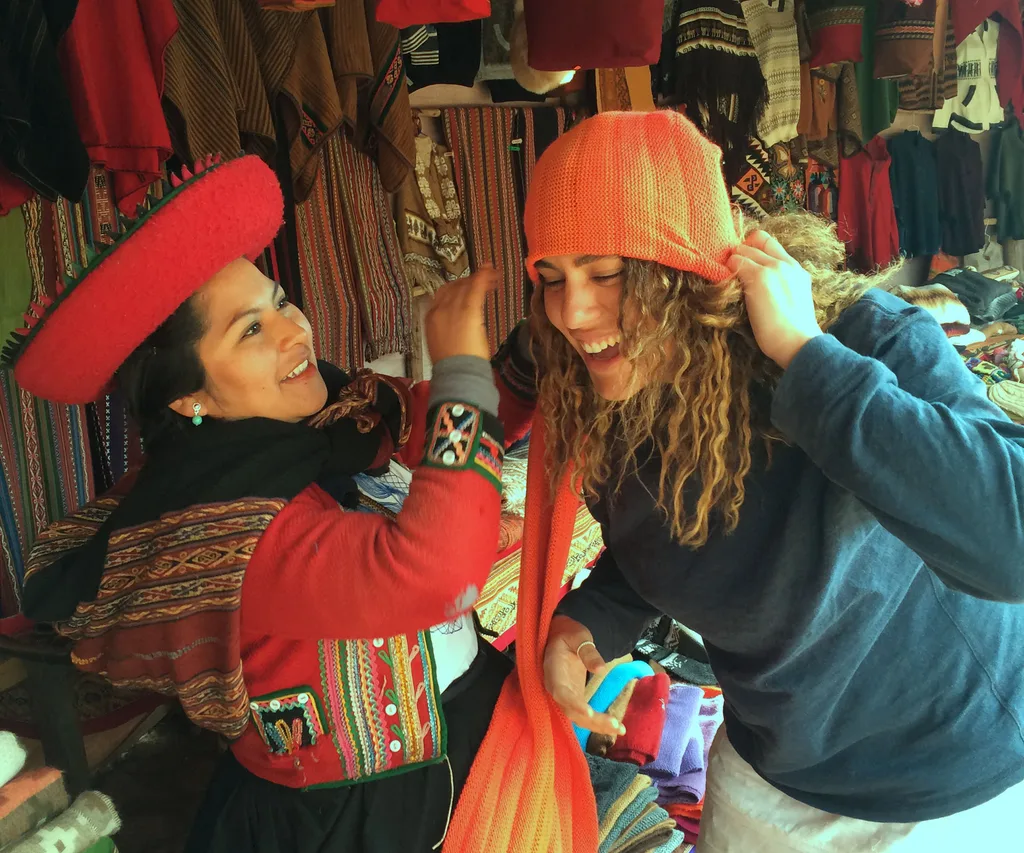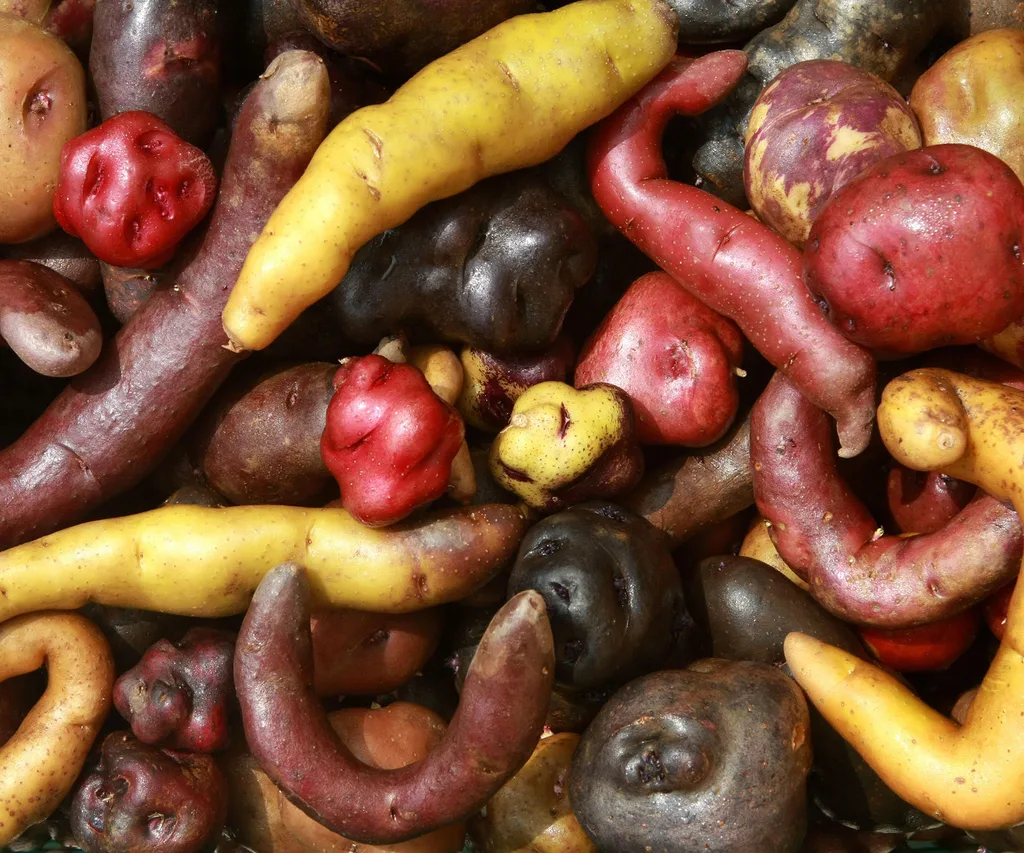Earlier this year The Weekly’s Jessica Vander Leahy visited Peru on a travel assignment and here are five unexpected things she learned from her travels…
Here’s a very important tip about Machu Picchu…
Before the arrival of the Spanish in the 15th century the ancient Incas spoke their native language of Quechua.
Despite the best attempts of the conquistadors to stamp out all remnants of the lengua general, the native tongue still exists today and is spoken by many villagers, mostly living in rural areas.
The ancient Inca site Machu Picchu translates in Quechua to mean “Old Mountain”. Often tourists make the mistake of omitting the phonetic “Pik-chu” in the name resulting in the difference between saying ‘Old Mountain’ and ‘Old Penis’. And that’s a very important difference, right?

Moray.
The Inca’s knew a thing or two about plumbing
Anyone who suspects they have a dodgy plumber doing their home renovations should go and give them a swift kick up the backside once they read this.
This is the Inca archaeological site of Moray. Built centuries ago it has survived because of the basic but well installed drainage system of soil, sand and stones that lie beneath each platform.
The area has suffered several bouts of intense El Niño flooding – including the 2010 spell that shut down Cusco tourism for 3 months – yet the drainage endured and the ruins still stand.
So if the Inca people could build this space, in a relatively short amount of time using pretty much sharp sticks and fracking stones with water, then your plumber can sort out your Balmain terrace drainage in a reasonably allocated time without too much whinging about the slope of the suburban landscape.

Hanging with the locals.
Hanging with the locals in the Sacred Valley
These ladies were kind enough to sit and show us how they weave such incredible things from raw sheep and alpaca wool.
They treat and dye the wool using all natural ingredients. Want to know how they make hot pink? Well they use a mixture of a parasite that attacks the cactus – a small green bug looking thing that when squashed goes bright purple – and, children’s urine! They leave the mixture to ferment for two months and after that it is a potent pink dye.
And you can’t use adult pee, I asked, only kid’s pee is acidic enough to cause the chemical reaction.

Actually, altitude puts a rose in every cheek
We met these three children working on some plains near the Inca ruins of Moray.
They were aged 8-13 and were spending their school holidays shepherding some sheep and pigs for their family.
Like many villagers in the Peruvian highlands they had really rosy cheeks.
I always thought it was windburn that caused this but turns out because of the altitude they are born with bigger lungs and their highly oxygenated blood causes a red flush in the cheeks.

Peru is the land of carbs
Atkins just couldn’t be a thing in Peru because from the upper reaches of the Andes to the low lying altitudes of the Amazon the South America nation’s favourable agricultural climate and soil has given way to more than 3000 types of potato – not even joking!
There is evidence that the humble potato was domesticated in Peru more than 10,000 years ago and in that time boy have they learned how to cook ‘em!
From waxy round roots to long blood red tubes, each species has its own dish. My recommendation, try Causa on the coast. Made with papas amarillas, yellow potatoes that resemble yukon golds, Causa is like a giant carb-a-licious potato cake that is layered with fresh fish and veggies and boiled egg on top.
For more information on how to travel to Peru in style visit:
Tambo Del Inka, a Luxury Collection Resort & Spa




.png?resize=380%2C285)






